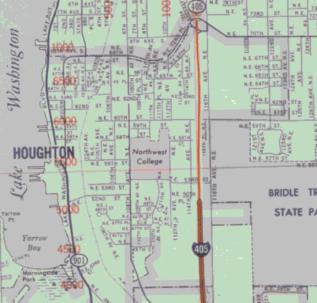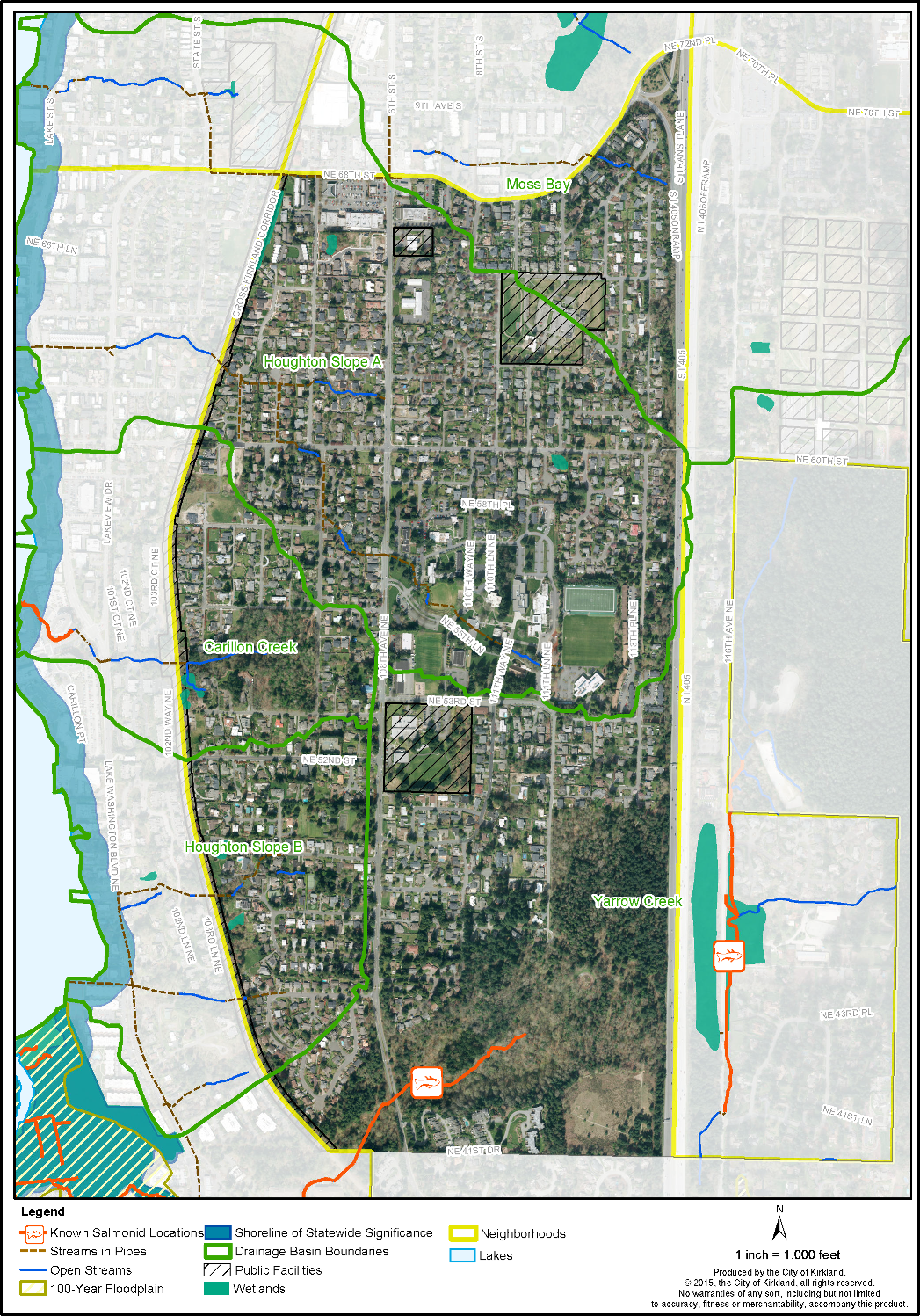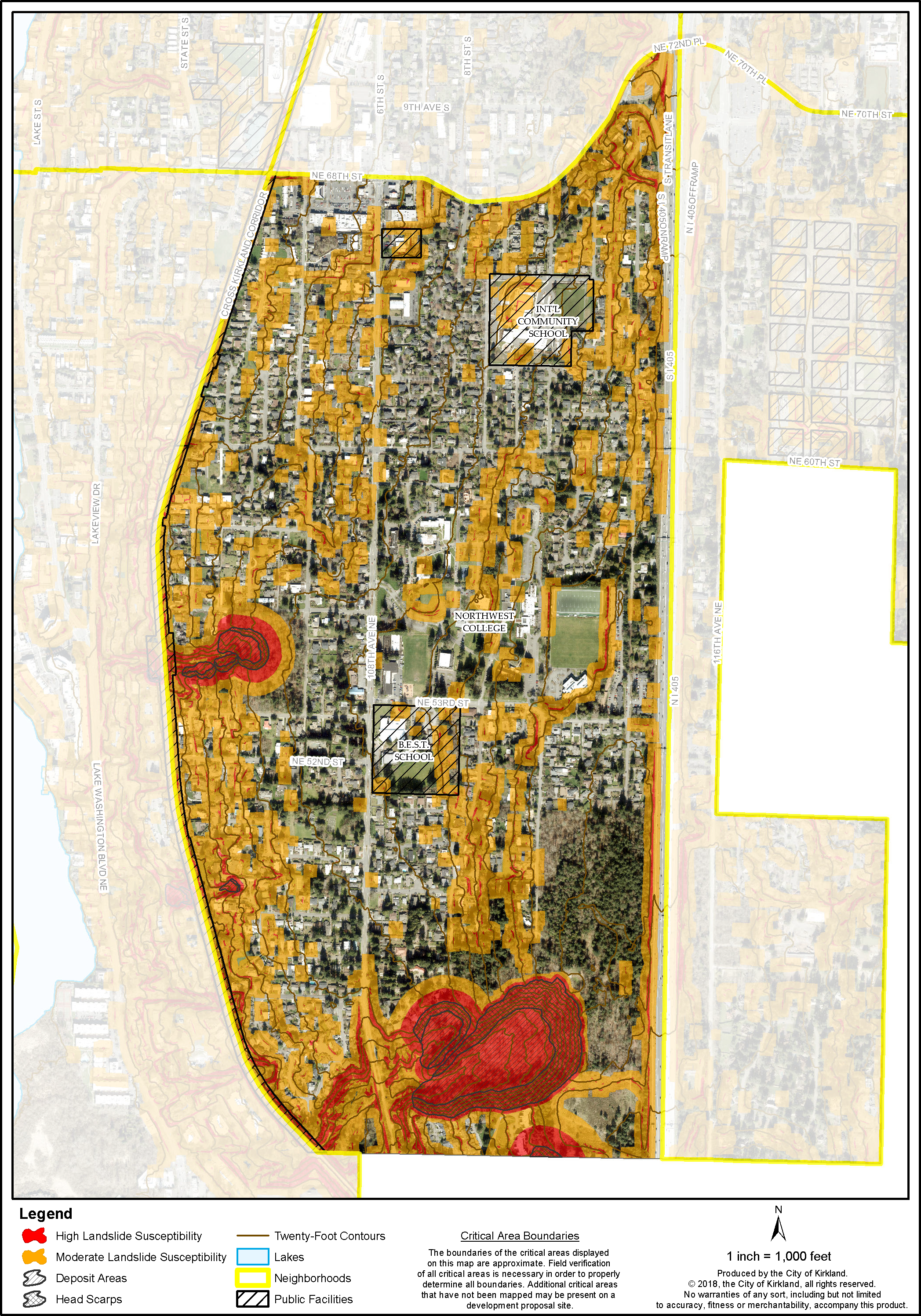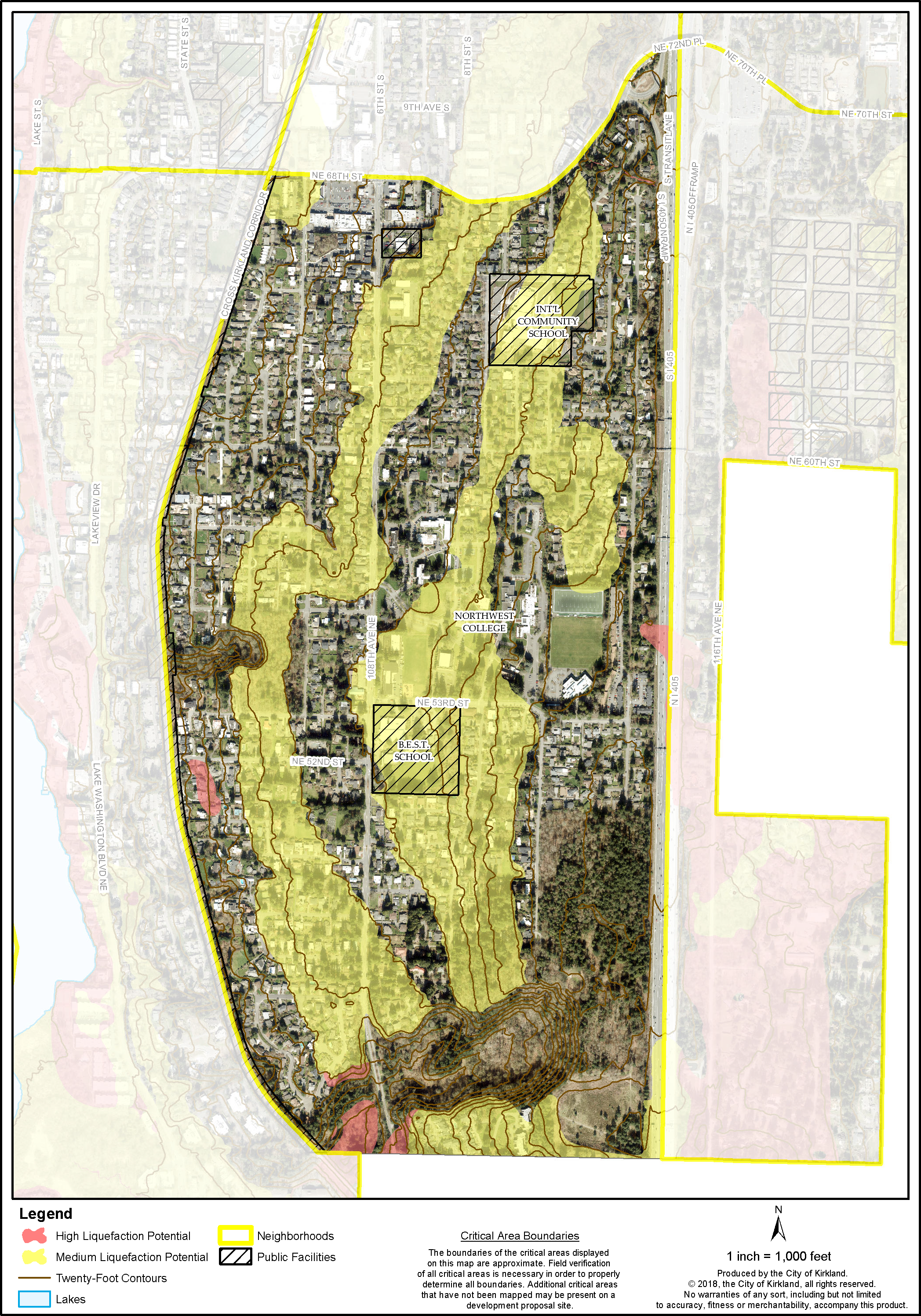3. Historical Context
The following history includes the Central Houghton and Lakeview Neighborhoods, as well as a portion of the Bridle Trails Neighborhood, since together they made up the City of Houghton until its consolidation with the City of Kirkland on April 30, 1968.
Naming and Early Settlement of Houghton: Samuel and Caroline French along with their adult son, Harry French, settled on the east side of Lake Washington in 1872. The French family was from Maine and had been corresponding with a friend who had settled in Seattle and praised the potential of the Eastside. Mrs. French named their new home Pleasant Bay.
The French family is considered Houghton’s first white settlers. Little has been learned about the earliest Native American inhabitants of the area, but Mrs. French reported seeing them as they rowed their canoes along the shore. The French house was built in 1874 at 10120 NE 63rd Street and was home to the French family for four generations. The house was moved to 4130 Lake Washington Boulevard in 1978.
In 1880, all communities were required by the U.S. Post Office to have a one-word name. The Pleasant Bay community submitted the name Edison, after Thomas Edison, but Edison was already being used in the Washington Territory. The Pleasant Bay church had been given a 600-pound Meneely & Company church bell by Mr. and Mrs. William Houghton of Boston and so the community of Houghton was named in their honor. When the congregational churches merged in 1894, the bell was relocated to the Kirkland Congregational Church on 5th Avenue in the Norkirk Neighborhood. The church has been rebuilt, but the bell remains there and rings every Sunday.
The Suffhoff home was built in 1903 by Kirkland realtor Charles Parrish for the Morris Orton family. The young widow Mrs. May Orton rented the home to Dr. George Hudson Davis in about 1910 and it was then used as a hospital and dental office. The home served as Houghton’s and Kirkland’s first hospital for 10 years.
Industry of Pleasant Bay/Houghton: The French family soon had industrious neighbors. The Jay O’Conners, who purchased the Popham/McGregor land, built the Steamer Squak and the large Lake House which was used as a hotel. The John and Abigail Fish family purchased the Lake House and continued the hotel business. The Lake House was in the family for generations and was torn down in 1984. The Curtis family built and operated ferries on Lake Washington for over 50 years. George Bartsch and his brother-in-law, Harrie Tompkins, started the Bartsch-Tompkins Transportation Company in 1904. Mr. Bartsch bought out Mr. Tompkins and then partnered with John Anderson to create the Anderson Steamboat Company in 1907. The Anderson Steamboat Company became the Anderson Shipyard which then became the Lake Washington Shipyard.
The Lake Washington Shipyard was at the site of the present Carillon Point development. One of the original buildings built in 1907 was used as a pattern shop for the wooden ships built during WWI, then as a mold shop for the steel ships built during WWII. The building was still standing until the development of Carillon Point.
The early shipyards were limited to building lake ferries or smaller oceangoing boats that could be navigated down the Black River at the southern tip of Lake Washington. In 1916, the opening of the ship canal lowered Lake Washington by almost nine feet and dried up the Black River. With the opening of the Montlake Ship Canal, the shipyard could build large oceangoing ships.
Houghton and the Wars: During WWI, shipbuilding boomed in Houghton, and many wooden war ships were constructed there. Workers commuted from Seattle for the work, which ended in 1918. The Second World War again brought tremendous growth for Houghton. The Lake Washington Shipyard built steel hulled ships and they were all in service at the end of the war. The U.S. Government built the Steward Heights housing project on 108th Avenue NE for the shipyard workers. This area is now the Northwest University campus.
Terrace Park – Site of the Houghton City Hall: Terrace Park was originally the site for a community center for the Lakeview Neighborhood during WWII. It was built to service the needs of the Lake Washington Shipyard workers. In about 1955, the buildings were converted to house the Houghton City Hall, library, fire station and police station. The existing cement pads were used as the floor of the Houghton Police Station.
Livelihood of Houghton Residents: From the early 1870s, Houghton was settled by educated and hardworking families spreading out across the country. They purchased their homesteads and, because of their isolation, they lived off their land. Their close proximity to Seattle also allowed them access to jobs, services and goods. For example, Harry French commuted to Seattle to work in Yesler’s Mill. At first workers rowed weekly, returning home for the weekend, and in later years they took a steamer daily. There were jobs in the forest, the coal mines, and the lumber mills, but all required a commute by rowboat, horse or on foot. As more settlers arrived, there was a need for scheduled ferry service, a school, and a place to worship.
School and Worship: Harry French built a frame cabin, which was used by the family until their family home was ready. This cabin later became Pleasant Bay’s first classroom and its first Sunday school. A church was then built and the minister, Reverend Greene, began coming from Seattle to make the rounds to the small local churches in the area.
Houghton Resident, John Cort: John Cort had the first legitimate theater circuit and owned 117 theaters on the west coast. Mr. Cort was also an early founder of the FOE Eagles and was their first President. He was the first in the world to use the new Edison lights in his Seattle Standard Theatre which burned in the great fire of 1889. Cort’s last remaining Seattle theatre is the Moore. Cort traveled a great deal to manage his theatres, but his family lived full time on Whisker Farms, his Houghton home until 1918. Around this time he moved his empire to New York City where he later retired and then died in 1929. Whisker Farms was on Cort Road, now 108th Avenue NE. The Collins School was built on the burned out ruins of Whisker Farms, but has since been torn down and replaced by homes.
City of Houghton: Until 1968, Houghton was a separate city with a Houghton address and residents that were called “Houghtonites.” When Houghton merged with Kirkland, there was a strong emphasis on retaining some authority on land use and zoning issues. State law allowed Houghton citizens to maintain control of their zoning and continued enforcement of their land use plan. The Houghton community continues to have a Houghton Community Council with veto power over land use actions of the Kirkland City Council relating to the area of the old City of Houghton. The Houghton Community Council is one of only two such community councils remaining in the State of Washington.
Although the City of Houghton and the City of Kirkland merged over 40 years ago, there is still a strong feeling of community among the residents of the Central Houghton neighborhood because of their unique history as a separate town.
1968 Road Map of the Houghton Area
History taken from Primary Sources: Family and State records, the Boston Newspaper, 1889 Kirkland Press and the French Diaries. For more information on the history of the City of Houghton please contact the Kirkland Heritage Society and see the Lakeview Neighborhood Plan.
Goal CH-1: Encourage preservation of structures, sites and objects of historical significance in the Central Houghton Neighborhood.
Policy CH-1.1: Encourage property owners to preserve buildings, structures, sites and objects of historical significance.
The Community Character Element establishes the hierarchy for designating historic buildings, structures, sites and objects in the City. Although age is an important factor in determining historical significance, other factors, such as the integrity of the building, architecture, location and relationship to notable persons or events of the past, are also important.
Policy CH-1.2: Provide directional signs, markers and interpretive information at structures, buildings, sites or objects of historical significance.
Individual historic properties are encouraged to add historic plaques and interpretive signs. Additional directional signs and interpretive centers at or near structures, buildings, sites or objects of historical significance around the neighborhood will help bridge Houghton’s rich history with future generations. Most of the original historic street names have been changed over the years. As street signs are replaced, the original street names could be added to recognize the neighborhood’s history. The Community Character Element of this Comprehensive Plan also lists other techniques to preserve the neighborhood’s history.
Figure CH-2: Central Houghton Wetlands, Streams, and Lakes
Figure CH-3a: Central Houghton Landslide Susceptibility
Figure CH-3b: Central Houghton Liquefaction Potential





